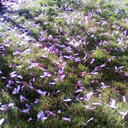Effect of the carthamins yellow from Carthamus tinctorius L. on hemorheological disorders of blood stasis in rats.
Avainsanat
Abstrakti
Hemorheological disorders may play an important role in the pathogenesis and development of many diseases. Blood stasis, i.e. the decrease of blood flow velocity, indicates hemorheological abnormalities. The carthamins yellow (CY), isolated from Carthamus tinctorius L., has been extensively used as a natural food colorant. We investigated the effects of CY on a blood stasis model, which was obtained by placing rats in ice-cold water during the time interval between two injections of epinephrine. The results demonstrated that the CY significantly decreased the whole blood viscosity, plasma viscosity, and erythrocyte aggregation index, which were increased in the blood stasis model. Hematocrit and platelet aggregation were reduced, while prothrombin time was delayed with increasing doses of CY. Therefore, CY administration might provide the additional benefit of increasing blood fluidity by lowering blood viscosity, which can be of great value in the prevention of hemorheological disorder-associated diseases in at risk patients. Meanwhile, the mild activities of antiplatelet aggregation and anticoagulation induced by CY should be considered, if these relatively untoward symptoms occurred when the hemorrhagic patients ate food colored by CY. However the small amounts used in food are highly unlikely to cause adverse effects.



